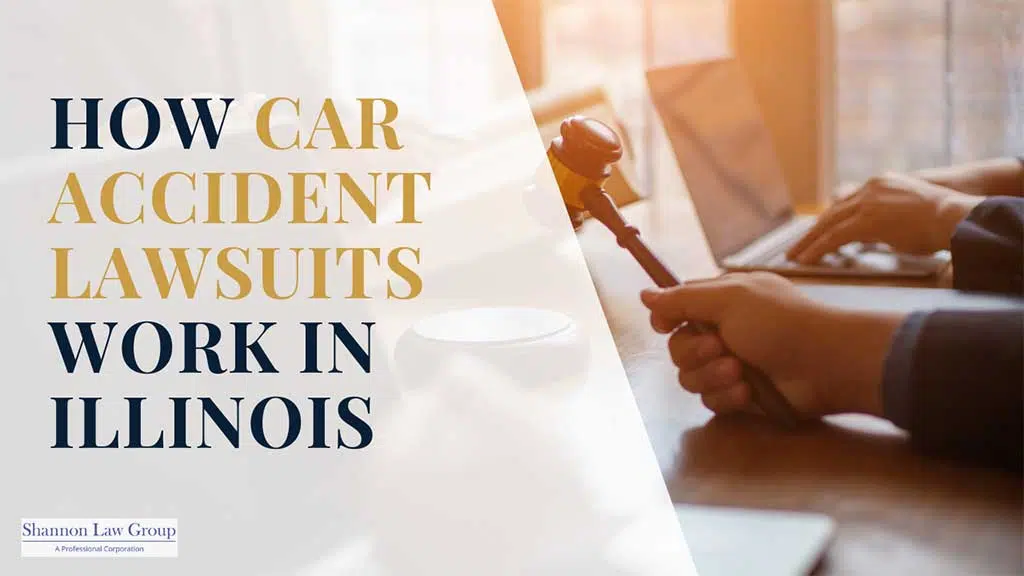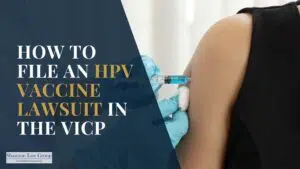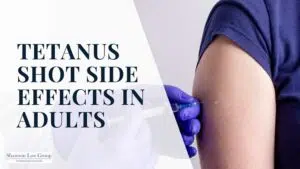I’m going to jump to the chase: In this article, you’ll learn what to expect during a car accident case in Illinois, from investigation through recovery.
But first, let’s talk about what you must prove in order for an auto accident lawsuit to be successful.
What You Must Prove in Your Illinois Car Crash Case: Negligence and Care
Just because you were injured in a car accident does not automatically mean you are entitled to recover from a lawsuit.
You are only entitled to recover if you can prove that the other driver was at fault–and their negligence caused your injury. In extreme cases, you may have to prove that the at-fault driver was reckless.
In the eyes of the law, negligence amounts to not acting reasonably under the circumstances.
To prove a driver was negligent, you must prove:
- That the driver failed to drive with ordinary standards of care;
- That you were injured; and
- That the driver’s lack of care was what caused your injuries.
Recklessness, in contrast, is conduct that shows an utter indifference to the safety of oneself or others. The important difference with recklessness is that it entitles a victim to punitive damages.
The 7 Stages of Your Car Crash Case
To take a case from the accident through trial, lawyers need to engage in a wide variety of activities. Generally, they progress in several stages that lead up to either a settlement or a trial.
Keep in mind, that this is an overview. No two cases are identical. The order of steps could overlap or change from case to case.
Stage 1: Investigation
In almost all cases, the first step your attorney will undertake is to thoroughly investigate the facts of the case. This involves obtaining all documents that could shed light on the following components:
- The identities and whereabouts of all those involved;
- Who was at fault;
- The nature and extent of all injuries and damages;
- The availability of insurance coverage; and
- As many details as possible about what occurred at the scene of the incident.
In a car crash case, this typically involves getting police reports, medical evaluations, photographs of the scene or vehicles involved, medical and auto repair bills or estimates, and documented insurance coverage.
Some of these documents, particularly medical documentation and records of missed work time, will continue to evolve throughout the case.
Next, the investigation continues with a physical investigation of the crash scene. Depending on the nature of the crash, this investigation should be conducted by the attorney or a trained investigator, who takes high-quality photographs to bolster any testimony at trial.
If you have retained your attorney shortly after the crash, your lawyer will preserve perishable evidence like skid marks, construction, or untrimmed plants or foliage that obstruct the view.
If you have any witnesses besides yourself and the other driver, your attorney or an investigator will likely attempt to interview them at this stage.
Stage 2: Filing the Lawsuit
When the investigation produces sufficient information to form a claim, you can formally initiate the lawsuit. Your attorney will file a complaint in court against some or all of the at-fault parties.
The complaint should state at least the minimum number of facts necessary to prove negligence, recklessness, and any other claims you want to charge at this stage.
If the facts are not enough to sustain your claims, the court can order you to amend the complaint or can dismiss the case entirely. That’s why a thorough investigation is so important.
The complaint must also be personally delivered to each of the defendants or their legal representatives. This is often done by sheriffs or professional process servers.
A plaintiff should not attempt to personally serve the complaint on the defendant. Occasionally a defendant will attempt to hide from process servers, which can delay the process and likely anger the judge.
Stage 3: Discovery
After the lawsuit has been filed, both parties will engage in discovery. Discovery is the process both sides use to learn about the other’s evidence, arguments, and claims. It comes in two main varieties: written discovery and deposition.
With the written discovery, you can demand that your opponent answer questions, produce documents, or admit facts related to the case.
A deposition is a formal process by which the lawyers get to pose questions about the facts of the case to a party or witness. They are transcribed by a court reporter. The party or witness answering questions is bound to tell the truth just as if they were testifying in court.
If you bring a lawsuit, it is virtually guaranteed that the other side will call you to sit for a deposition. Your deposition is a very important part of your case.
It will create a strong impression of your demeanor and credibility. It will also give the opposing attorney an impression of how the jury will relate to you. These impressions will factor strongly into settlement negotiations.
No two depositions are exactly alike. Different attorneys have different styles.
But if there is one rule you must remember, it is to always tell the truth in the process. Not telling the truth could result in important facts being excluded at trial or, even worse, your losing credibility before the jury at trial. Once you lose your credibility with the jury, there is nothing you can do to get it back. Your case will most likely be lost.
How long that process takes will depend on the facts in your case; the demeanor, style, and experience level of the attorneys involved; and the laws of your state.
Your lawyer should take time prior to the deposition to explain, in detail, what to expect.
Stage 4: Motions Practice
At various stages of the personal injury case, one or both parties may file motions. A motion by either side is simply a request that the judge does something.
The effects of a motion can range from insignificant to decisive to your case outcome. Common motions that can heavily impact your case include:
- A motion to dismiss (throw out your case based on the complaint documents);
- A motion for summary judgment (enter judgment for the moving party without going to trial); or
- Motions to exclude evidence at trial (usually because there is no proper purpose for it).
While your attorney should promptly update you when a motion is filed, there is not much for you to do for the most part. Motions typically involve pure legal arguments (not factual arguments), which is your lawyer’s job.
Occasionally, your personal injury attorney may ask you to write an affidavit, which is a sworn statement attesting to certain facts. They may also ask you to review a description of the facts of the case, but generally, there won’t be anything for you to do with these.
Stage 5: Settlement Negotiations
Settlement negotiations often proceed throughout the entire course of a case. They can begin even before a case has been filed. Settlements can happen even after a trial has been completed and the jury has returned its verdict.
As a general rule, defendants and insurance companies can make an offer early in a case. But these offers are lowball offers that do not come close to the actual value of a claim.
If you have a “trial lawyer,” as opposed to a “settlement lawyer,” your case will likely settle much closer to trial.
Much of the case leading up to trial involves both sides testing each other’s strengths and weaknesses. In particular, both sides get a better sense of the value of a case after key depositions are taken and after key motions are decided by the judge.
As both sides learn more about the facts and legal theories of their adversaries, settlement typically becomes more likely.
Any offer your attorney makes on your behalf or receives for you must be presented to you for approval. It is ultimately your decision what to demand and whether to accept any given offer, not your attorney’s decision.
That said, your attorney has likely been through the settlement negotiations process dozens, if not hundreds, of times. They have a lot of experience with the verdict amounts juries award in automobile crash cases.
The advice they give regarding negotiations could be some of the most valuable advice you get in your case.
Stage 6: Trial
If your case survives motions practice and settlement efforts long enough, you eventually get to trial. How long it takes to get to this stage depends on many, many factors, including how busy the judges in your jurisdiction are.
In Illinois, most cases will not get to trial until close to two years after they are filed, but I have had cases that did not make it to trial for as much as five or more years.
The trial itself can last from a couple of days to multiple weeks depending on the complexity of the crash, the number of people involved, and other factors. I have been at trial for nearly a month in some cases. Most commonly, however, my car crash trials take less than a week.
At trial, you bear the burden of proof. You only win if you are able to prove that you are entitled to recover. If the defendant can keep you from putting together one link in the chain of proof, you lose.
Both sides will present evidence by calling witnesses and submitting documents and physical evidence.
In an automobile crash case, the plaintiff and the defendant driver will both almost certainly be called to give testimony. Other witnesses to the accident may be called. And, depending on the case, either or both sides may call an expert witness to testify.
Once both sides have presented all their evidence, the case is submitted to the jury. At this point, the fate of the case is in their hands.
They will return a verdict both determining whether you win or lose and, if you win, how much of your injuries were caused by the defendant.
Stage 7: Post-Trial
Whether you win or lose at trial, it does not mean that your case is done. There are some ways that your case can be returned to the trial judge.
First, following a trial, it is common for the losing side to file motions that the judge should order a retrial because the jury got it wrong.
These motions are common because they preserve that party’s right to appeal. They are rarely granted because judges rarely reverse their own decisions or admit they made a mistake.
Second, the losing party can file an appeal with a higher court arguing that the trial judge made mistakes that entitle him to a new trial or a reversal of the judgment.
Again, these are not commonly granted because proving that a trial judge made a mistake is usually a very high standard.
The chance for an appeal is the reason that settlement negotiations can (and often do) continue even after a trial. Even though the chances of a reversal are slim, it is a chance.
Lawyers (and insurance companies) would often prefer to shoot for a slim chance than pay out money that they are required by law to pay. However, if you win at trial, you will have the negotiating strength.
Injured in a Car Accident? Schedule a Free Consultation Now
If you made it this far in the article, you understand how important it is to have a competent attorney on your side throughout your car accident lawsuit.
At Shannon Law Group, P.C., we’ve successfully fought and won hundreds of these cases in Chicago and the surrounding area. We know what to expect, and we’ll guide you through the entire process from start to finish.
Call us today at (312) 578-9501 to learn more about how we can help you. You can also fill out the form at the bottom of this page to get started.
Schedule Your Free Consultation Today




